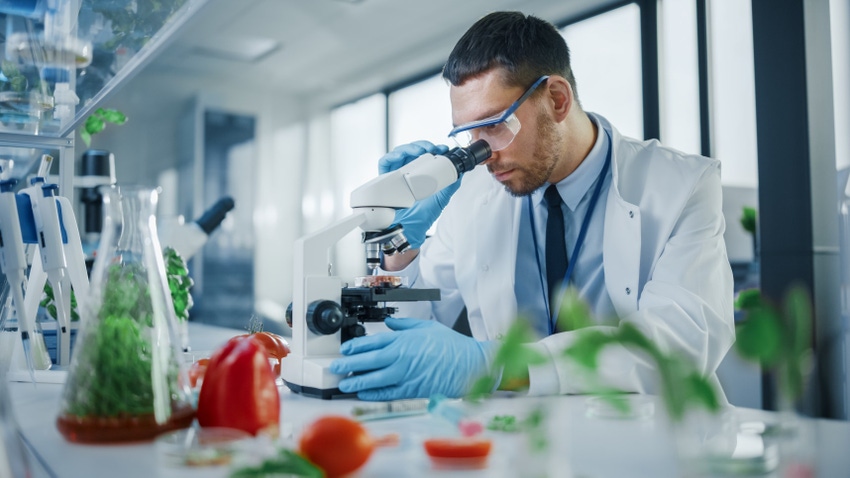Food scientists must collaborate, lead to future-proof industry
During a panel discussion at last year's SupplySide West, several experts explained what it means to be an effective food scientist, from learning the scientific fundamentals to building business savvy.

At a Glance
- Food science studies the makeup of food, whereas food technology is the application of science in food product development.
- Various traits contribute to success in food science, including expertise, self-awareness and others.
- Effective product development relies on clarity and alignment around the goals for the product.
The world needs more food, faster than ever before. Supply chain disruptions and misunderstandings about the food system, however, threaten to stifle innovative solutions.
Kantha Shelke, founder and principal of food research firm Corvus Blue, spoke at a SupplySide West panel, “A Day in the Life of Food Science,” about future-proofing the industry. It starts with understanding the fundamentals of food science, including the disconnect between how we talk and learn about food, as well as the technical realities of the industry.
What is food science?
Food science is the study of the physical, biological, microbiological and chemical makeup of food, while food technology is the application of science to select, preserve, process, package, distribute and use food that is safe and wholesome.
In short, there is no food without science and technology. Becoming a good food scientist means acquiring sound science fundamentals, as well as skills in critical thinking, research, learning and teaching, and communication. It also includes the ability to understand business and collaborate with people from all over the world.
“Our food industry … is very dependent on a different region of the world [from the U.S.],” Shelke explained. “Take turmeric, take cacao, take chocolate, take ginger … we don’t grow them here. We grow them [elsewhere]. But have we seen any of our growers at our conferences? Have we learned about how they grow it, what changes they have seen? Have we respected their knowledge and have we helped them? If you don’t, you’re making a big mistake. That’s when you make turmeric tea with turmeric and water. Turmeric does not dissolve in water. So, you’re making very expensive urine.”
Collaborative pathways to innovation
The food system depends on collaboration between people from various disciplines. While trying to convince people to eat insect-based foods, Changqi Liu, a food researcher at San Diego State University, worked with an anthropologist, a chef, a marketing professional and others.
Liu outlined five points for fostering collaboration among food scientists and other experts:
Forge a shared mission to create common purpose and clarify roles.
Foster institutional support to ensure teams have adequate resources.
Provide resources for optimal team performance.
Develop flexibility to work effectively with others.
Reward collaboration to ensure individuals see the benefit.
Preparing to enter the workforce
Lilian Senger, director of the food science program at Chapman University, indicated that preparing for a career in food science means becoming comfortable not only with math and chemistry, but also with the consumer aspects of food. Research can serve as a springboard into the workforce, but food scientists must be agile and adaptable because new technologies are constantly changing the industry. Use these tools — but use them wisely.
“As food scientists, we are responsible for food quality, we are responsible for food safety,” Senger said. “So, there’s a huge emphasis, again, on ensuring that these technologies are being used and not abused.”
Leadership in food science
According to Michelle Frame, president and founder of Victus Ars and Institute of Confectionery Excellence, meeting a few core requirements can help you excel in food science. These include having a technical degree in STEM, understanding project methodology and acquiring other related skills, but there are five additional attributes people don’t often talk about:
Business savvy helps you understand how decisions are made and how your work matters.
Navigating company culture. If you’re a leader, the team you’re on isn’t the one you manage.
Expertise to ensure you have a firm base of technical knowledge.
Self-awareness and leadership skills; other people count, too.
Resources. Know how and where to find what you need to succeed.
The keys to product development
What makes a food scientist effective at product development is the ability to turn a vision into a real product. This requires clarity and alignment around expectations for the product. That said, don’t be afraid to ask questions and adjust your goals as you go.
“When your marketing team or your client comes to you, they don’t know food science,” Amy Usiak, R&D lead at JPG Resources, explained. “They’ve got this long list of things … and it’s your job as the food scientist or product developer to talk to them. You have to talk to them like, ‘What’s more important to you? Your ingredient line, or your Nutrition Facts [label]?’ Because if you only want 2 grams of sugar in this bar and you only want me to use real ingredients, the product’s not going to come together.”
About the Author(s)
You May Also Like






